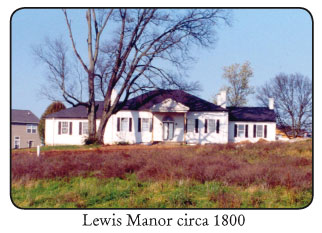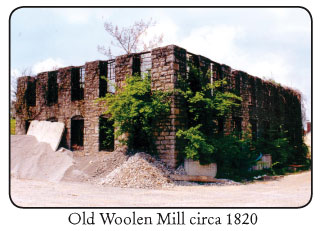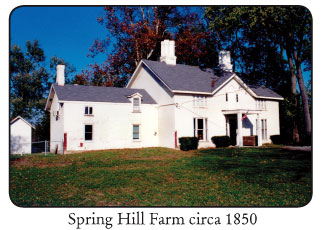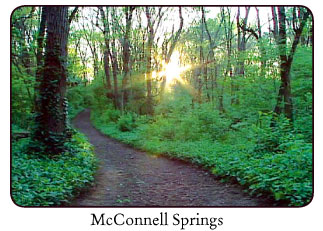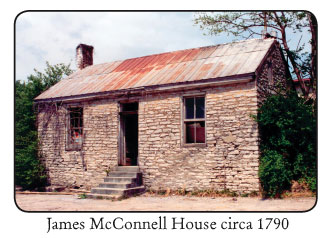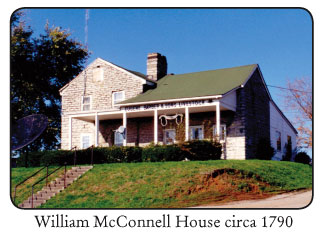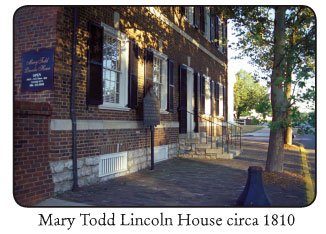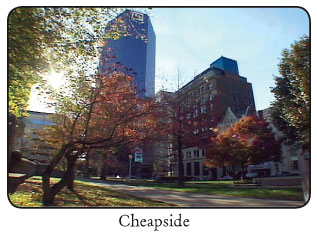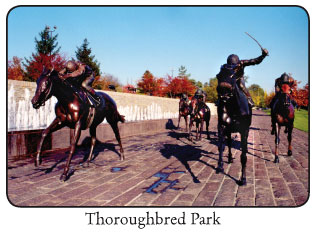The way cities and suburbs are developed could be bad for your health
By Martha T. Moore
USA TODAY Page 1A
Why don’t Americans walk anywhere?
Old answer: They’re lazy.
New answer: They can’t.
There is no sidewalk outside the front door, school is 5 miles away, and there’s a six-lane highway between home and the supermarket.
Many experts on public health say the way neighborhoods are built is to blame for Americans’ physical inactivity — and the resulting epidemic of obesity.
The health concern is a new slant on the issue of suburban sprawl, which metro regions have been struggling with for a decade. These health experts bring the deep-pocketed force of private foundations and public agencies into discussions about what neighborhoods should look like.
The argument over whether suburbs are bad for your health will hit many
Americans precisely where they live: in a house with a big lawn on a cul-de-sac.
”The potential for actually tackling some of these things, with the savvy of the folks who have tackled tobacco, is enormous,” says Ellen Vanderslice, head of America Walks, a pedestrian advocacy group based in Portland, Ore.
A study by the federal Centers for Disease Control and Prevention is tracking 8,000 residents of Atlanta to determine whether the neighborhood they live in influences their level of physical exercise.
The Robert Wood Johnson Foundation in New Jersey, the country’s largest health care philanthropy, is spending $70 million over five years on studies and programs to make it easier for people to walk in suburbs, cities and towns. ”We want to engineer routine activity back into people’s daily lives,” says Kate Kraft, the foundation’s senior program officer. ”That means we need to start creating more walkable, bikeable communities.”
For decades, cities, towns and suburbs have been developed on the assumption that every trip will be made by car. That has all but eliminated walking from daily life for people in most parts of the country. Americans make fewer than 6% of their daily trips on foot, according to studies by the Federal Highway Administration.
Three-quarters of short trips, a mile or less, are made by car, federal studies show.
Children don’t get much more of a workout. Fewer than 13% of students walk to school. That’s partly because regulations for school construction effectively encourage building schools on large sites at the edge of communities, beyond walking distance for most students, according to a National Trust for Historic Preservation report.
Federal health statistics show that nearly 65% of Americans are overweight and that 31% are obese, or more than 30 pounds over a healthy weight. A big part of the cause is all that driving and not enough walking.
”Obesity is not just (that) we’re eating more. We’re getting less activity. People just don’t walk that much,” says Tom Schmid, head of the CDC’s Active Community Environments program.
Why you can’t walk there from here:
* Spread-out neighborhoods. Bigger houses on bigger lots mean neighborhoods stretch beyond walking distance for doing errands.
* Zoning. Residential neighborhoods are far from jobs and shopping centers, even schools.
* Reign of cars. Roads are built big and busy. Intersections and crosswalks are rare. Shopping centers and office parks are set in the middle of big parking lots, all of which have become dangerous places to walk. In many cul-de-sac suburbs and along shopping strips, sidewalks don’t exist.
Suddenly, the crowded city looks healthy.
In old, densely built cities such as New York and Boston, people walk.
It’s not necessarily for exercise, but simply to get from one place to another. College towns and cities with military bases also have high rates of walking, Census data show. Houses and workplaces are near each other. If people don’t walk to work, they often walk to public transit.
In November, Oakland became one of a few large cities to pass a pedestrian master plan. The city already has a walking-friendly design because it was laid out at the turn of the 20th century along streetcar lines. Nevertheless, city officials want to make sure that people can walk to a new rapid-transit bus system. That will mean spending money to upgrade sidewalks and intersections near the transit stops.
”It’s back to the future. We’re going to have this transportation system where you don’t need to drive,” says Tom Van Demark, director of
Oakland’s pedestrian safety project.
In newer cities, especially those in the Sun Belt where growth has boomed since 1950, walking anywhere is not easy. Families wanted more space for their children, so they moved to single-family houses with yards in big residential neighborhoods. Jobs and services, like shopping, followed people to the suburbs, away from the downtown that could easily be served by public transit.
Hopping into SUVs
Even in places designed to be walkable, things have changed. Victoria
Talkington, a lawyer and mother of two children, lives north of San Francisco in Mill Valley, on the slopes of Mount Tamalpais. A network of paths and steps connects roads that switch back along the mountainside.
The footpaths lead from downtown into elevated residential neighborhoods.
But in the hundred years since the paths were laid out, they had fallen into disuse. Instead, people drive down the roads.
”People with SUVs and kids have moved in, and they’ve displaced people who knew about the paths,” says Talkington, a planning commission member.
Near her house is a path with a great view of the mountain. ”Nobody who lived within a hundred yards of it knew about it,” she says. So she took a pruner and cleared the overgrown path last fall.
Now, people occasionally use it.
Steven Gayle, director of the transportation system in Binghamton,
N.Y., is running seminars on pedestrian improvements, paid for by the Robert Wood Johnson Foundation. ”What we really need to do is redesign our communities so that people walk as a matter of course, the way they used to do,” Gayle says. ”Hopping in your SUV to drive to the park to walk on the trail for 20 minutes and hopping in the car to drive home is not what we need to see.”
Public health advocates are well-funded allies for advocates of ”smart growth,” who criticize suburban sprawl and development. They have been arguing for a decade that communities should be walkable. Neighborhoods should be built with shorter blocks, smaller yards and streets that connect to each other rather than dead-end. Stores and offices should be close to or mixed with residential neighborhoods, they say.
The Urban Land Institute, a group for developers and planners, estimates that 5% to 15% of new development follows the principles of ”walkable” neighborhoods. Nearly 1.6 million homes were built in 2001.
”There’s a big awareness of the issue in the planning community, that
walkable places are nicer and sometimes are more economically viable,” says Reid Ewing, a Rutgers University professor and author of an upcoming study on sprawl and health. ”The question is, are they healthier? That’s really the new wrinkle.”
To find the answer, the CDC and the Robert Wood Johnson Foundation are funding studies such as the one in Atlanta. The public health experts want to find out what kind of neighborhood designs and amenities have a statistically significant link to increased walking.
Some metro areas are taking steps to make their cities pedestrian-friendly, either by upgrading neighborhoods with sidewalks and crosswalks or changing the rules for building developments.
Lots of people walk in Rochester, N.Y. And enough people commute by bicycle that city buses are equipped with bike racks. But ”the suburbs are built without sidewalks and without adequate shoulders on the roads,” says Bill Nojay, chairman of the regional transportation authority.
Last year, the region spent $5 million to upgrade walking and biking trails that connect the 19 towns in the county surrounding Rochester.
‘Shocked into it’
Fewer people walk to work in Atlanta and Charlotte than in any other large metro areas, according to Census data. But both cities are trying to make walking easier. They want to focus development around public transit and spend money on sidewalks.
In Atlanta, poor air quality from traffic congestion forced the issue.
The region could not spend federal transportation funds on new highways until it came up with a plan to improve air quality.
”The only projects we could build were the small projects geared toward the pedestrian,” says Tom Weyandt of the Atlanta Regional
Commission, the metro area’s planning agency. ”So in a sense, we were sort of shocked into it.”
The region is spending $175 million to build 385 miles of sidewalks by
2005.
That’s a small slice of the region’s 16,000 miles of roads and highways. But $350 million more over 10 years will go to transportation projects tied to the development of higher-density, mixed-use areas.
Those will be mostly pedestrian improvements, Weyandt says.
In Charlotte, fewer people walk to work than any other metro area of more than 1 million people. The city also made the top 10 ”fattest cities” list in the February issue of Men’s Fitness magazine.
But a master plan adopted by the city in 1998 calls for development to be clustered along light-rail and rapid-bus lines to encourage people to walk to public transit. The city now requires new subdivisions to have sidewalks and few cul-de-sacs. Also, the city is hiring a ”pedestrian coordinator” to work with developers.
Voters approved a $10 million bond issue in November to build sidewalks in places that never had them. Less than half of Charlotte’s 2,800 miles of streets have sidewalks on one or both sides.
Most of the motivation for these changes has been to cut down on traffic and pollution.
”The community health aspect of it is one that’s just emerging as a topic,” says Danny Pleasant, deputy director of transportation for Charlotte.
Public health vs. the good life
Many people, of course, get physical exercise regardless of where they live.
And for good or ill, a suburban house in a bedroom community is to many people the American dream. ”A large part of what some people call sprawl is what other people call affordable housing, jobs, highways that go somewhere and get you there,” says Daniel Fox, president of the
Milbank Memorial Fund, a health policy research foundation based in New York.
Builders of suburban neighborhoods and office parks often view a
walkable development as expensive to construct, hard to get past local planning agencies and difficult to finance, says Clayton Traylor of the
National Association of Home Builders.
Also, the main component of walkable neighborhoods is density, or the number of people per square mile — but density is what many homebuyers are trying to get away from.
”It’s just our own definition of what the good life includes, which is a couple of cars and a house on the cul-de-sac,” says Kraft of the Robert Wood Johnson Foundation. ”The good life means you can be a couch potato.”
That may mean Americans don’t want to walk regardless of what public health experts urge. ”Population health is what the population says it is,” Fox says.
”Why can’t Americans change their values? Why can’t everyone in Texas, instead of going to high school football games, spend their Friday nights exercising? Well, that’s the way it is, folks.”
Even so, those pushing for walkable developments hope that a public health approach will be more palatable than talking about smart growth and sprawl.
”Too many people just don’t care at all about design or sprawl,” says
Adrienne Schmitz of the Urban Land Institute, based in Washington, D.C.
”But when you start talking health, it’s a real hot button.”


